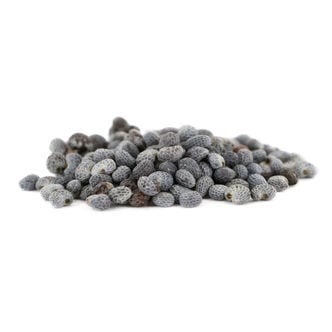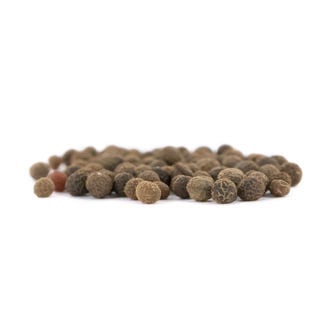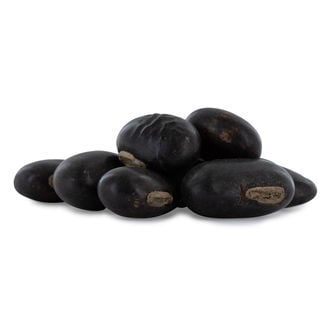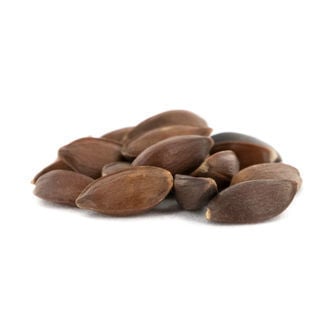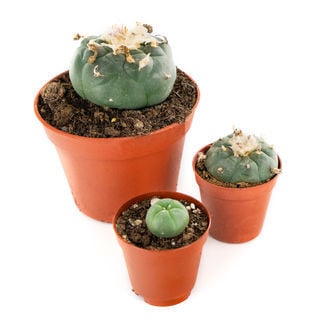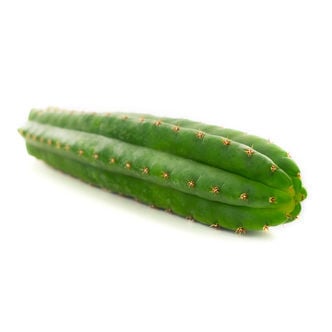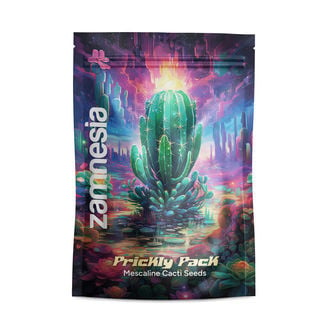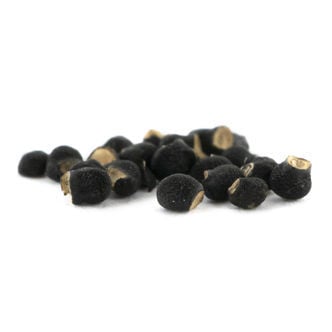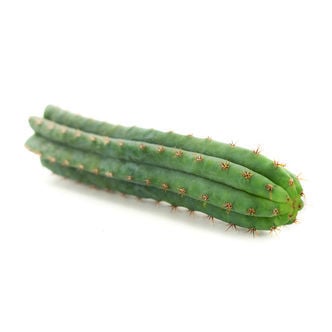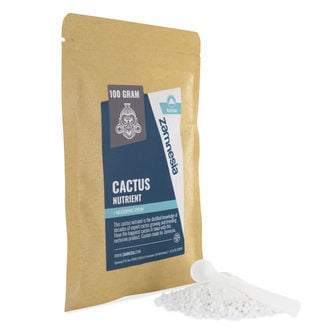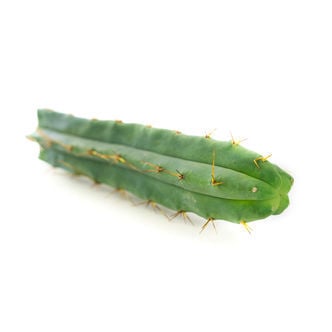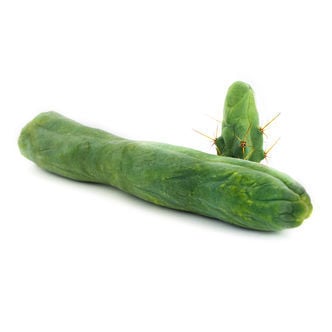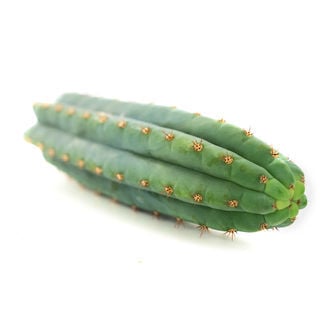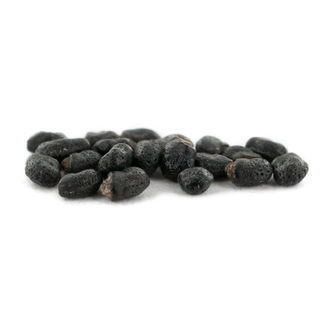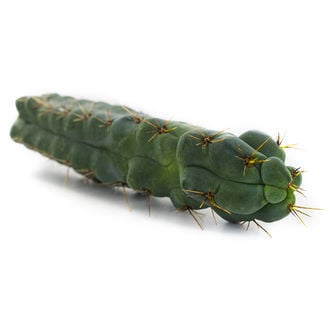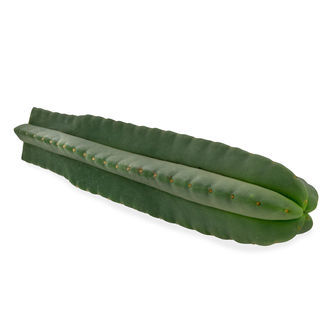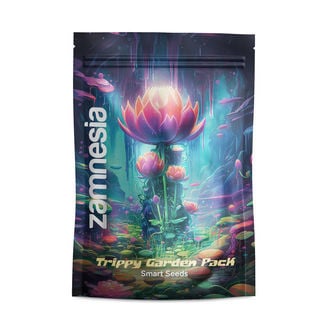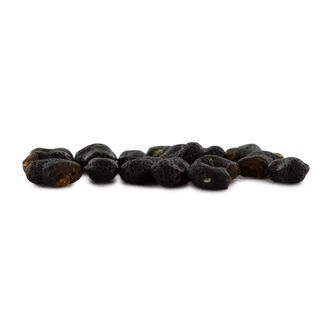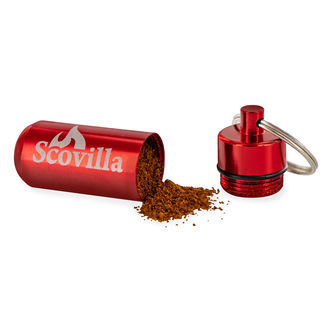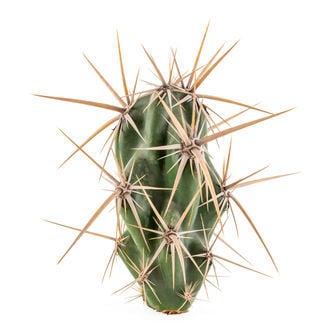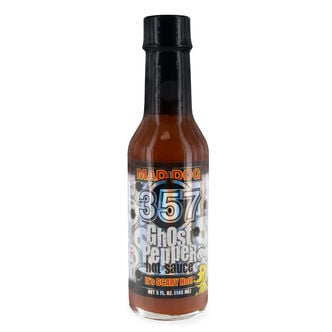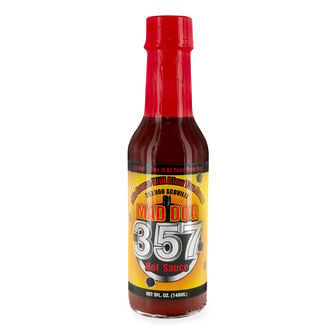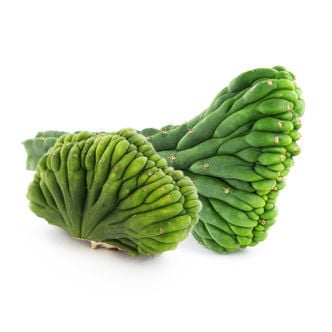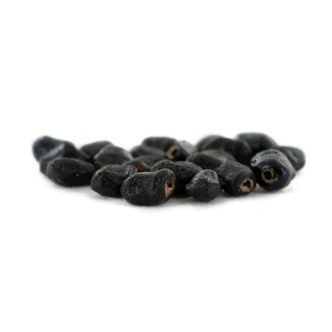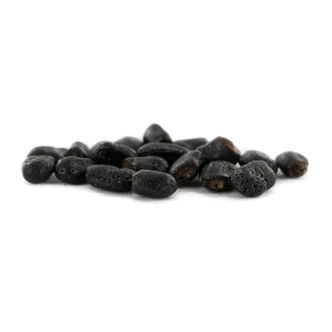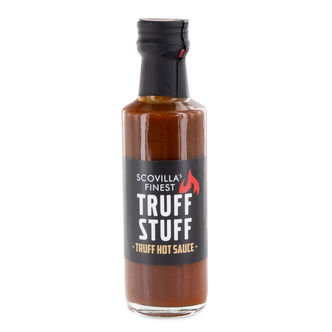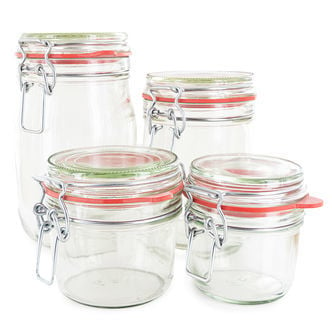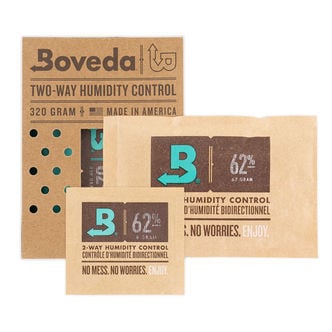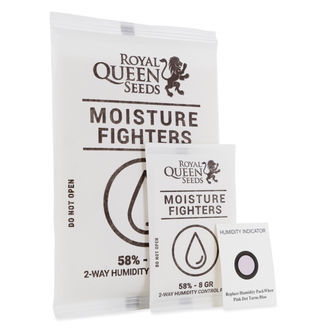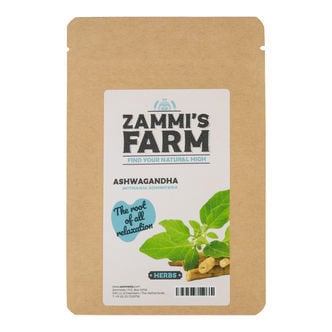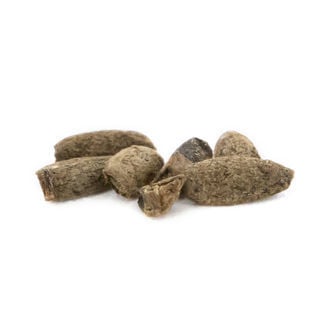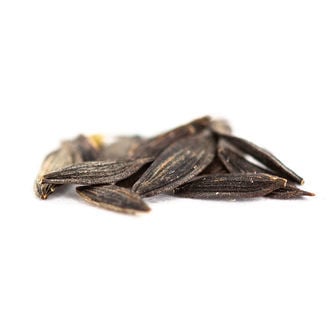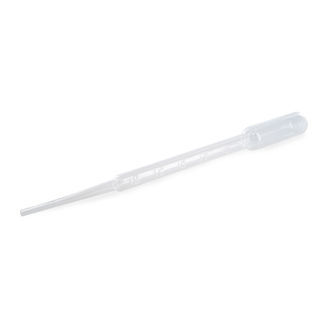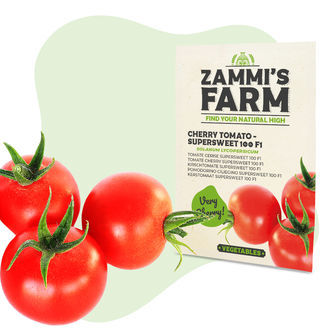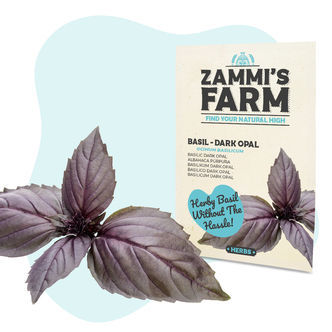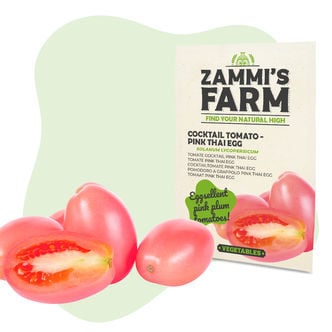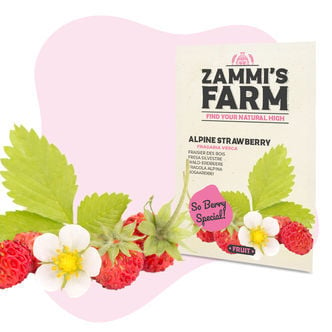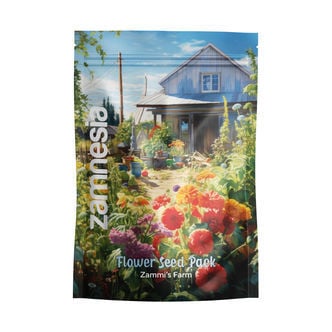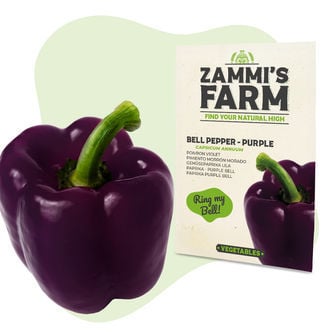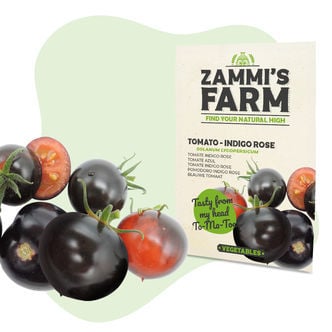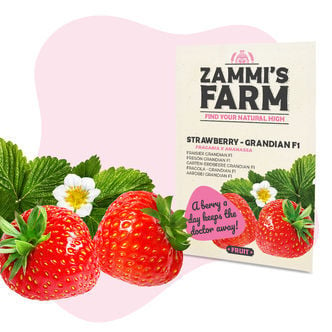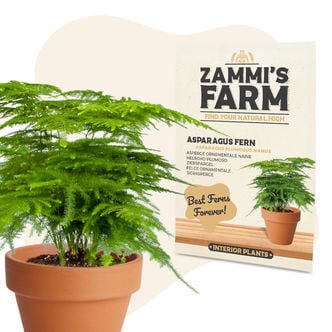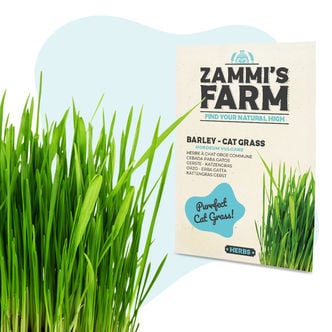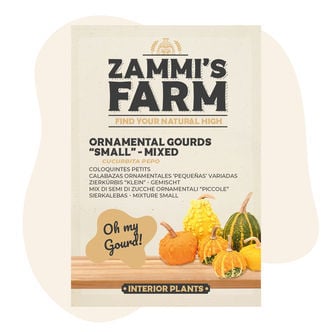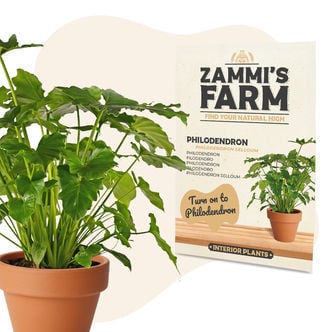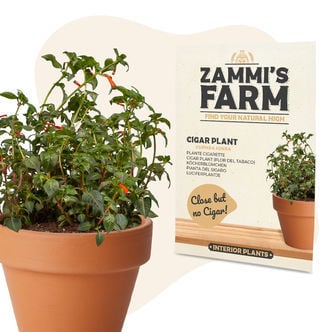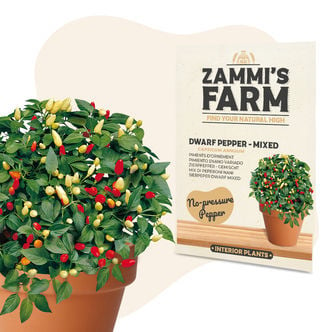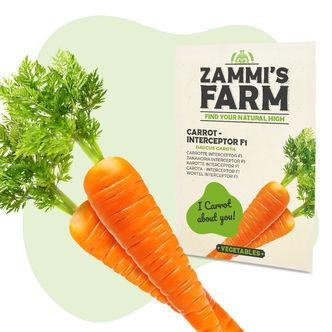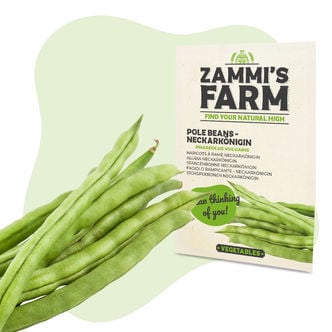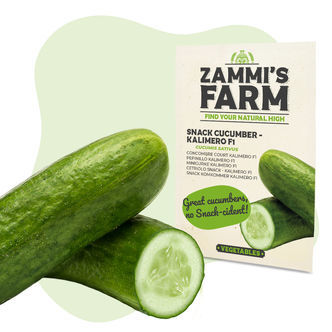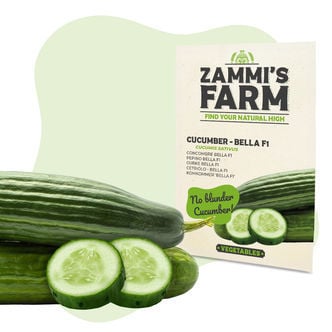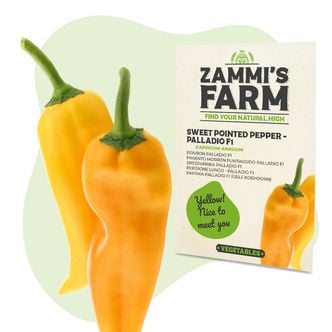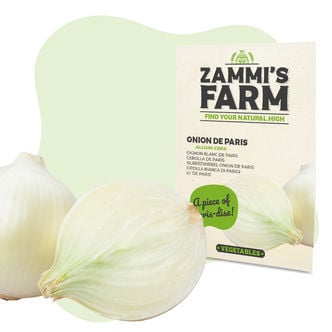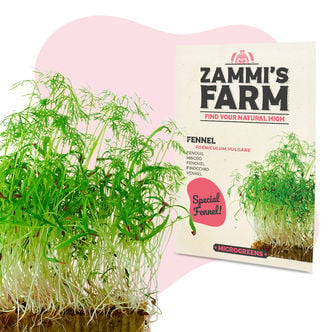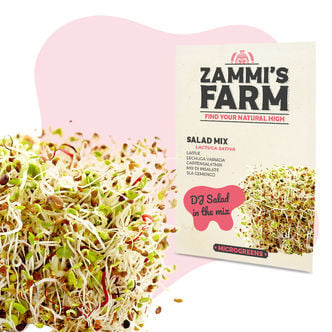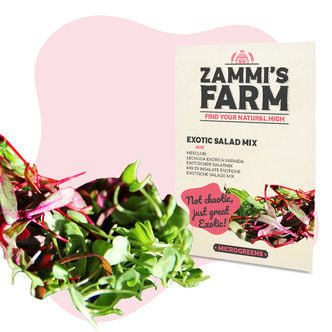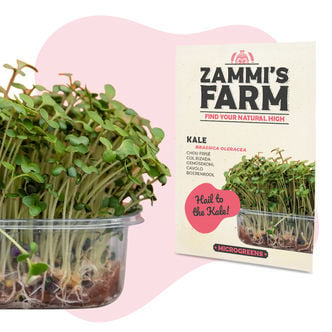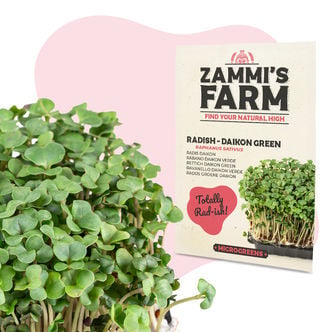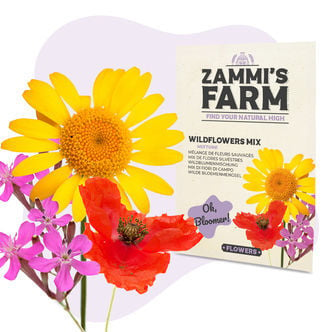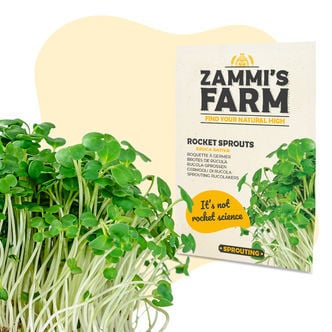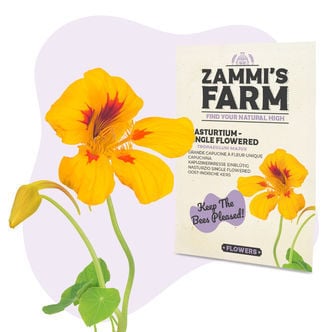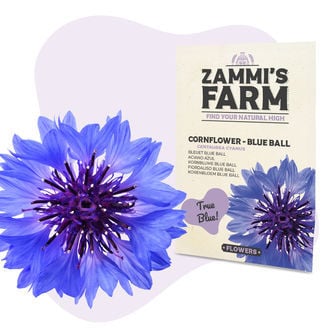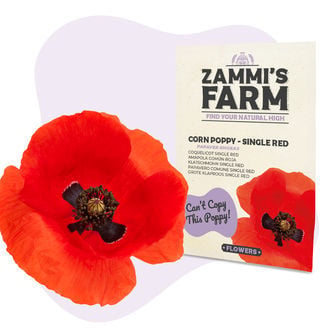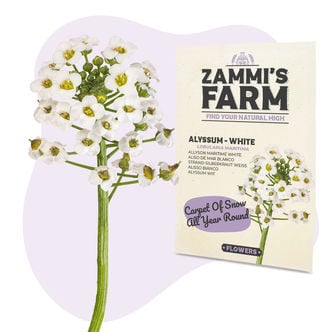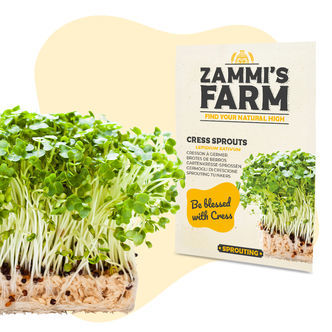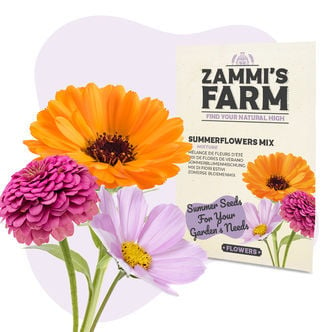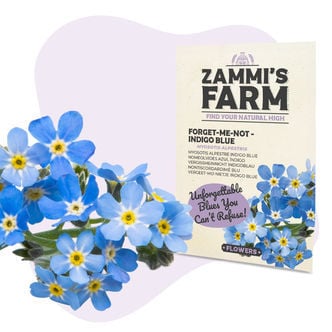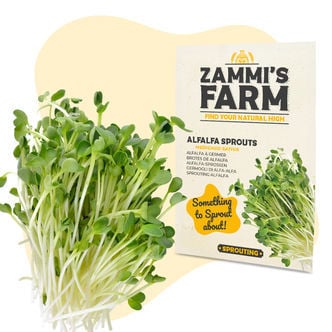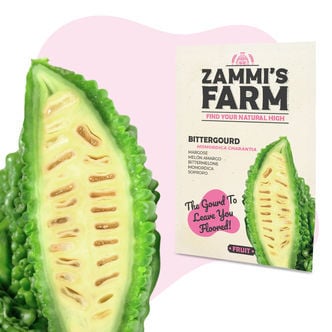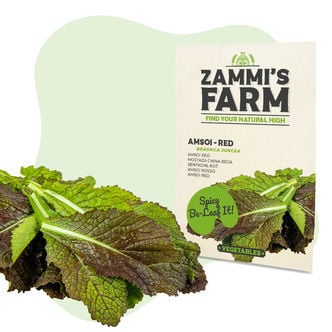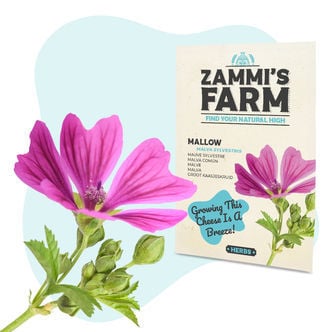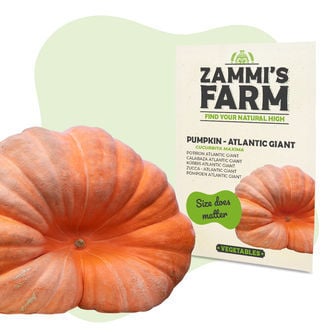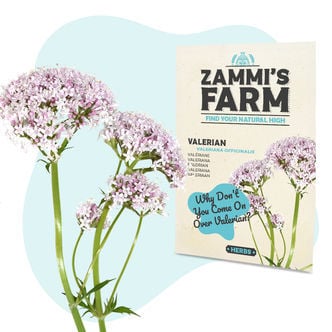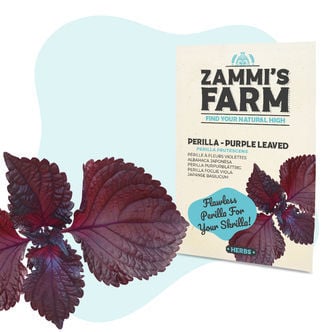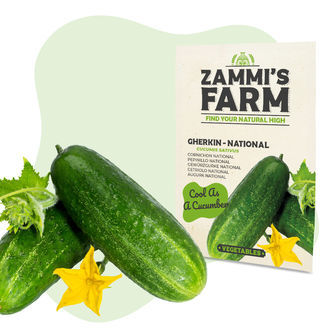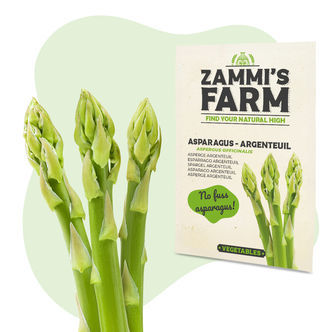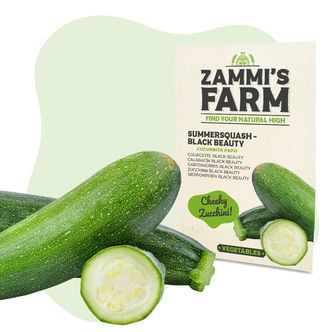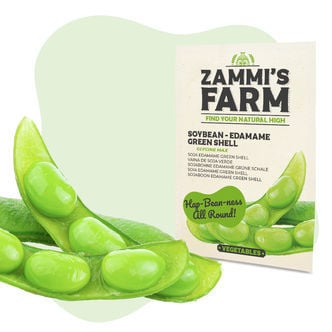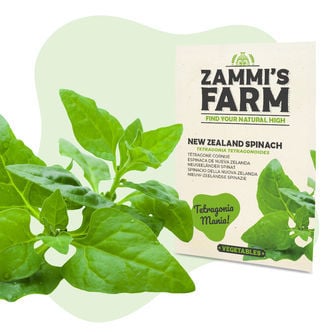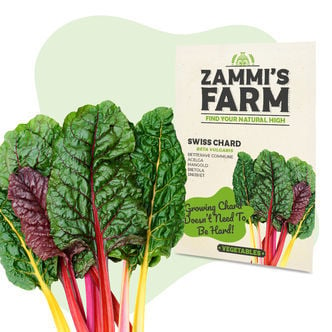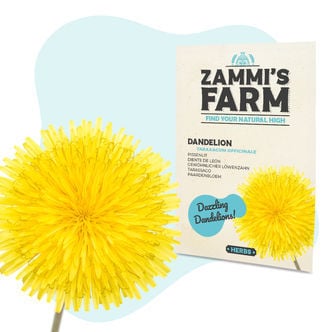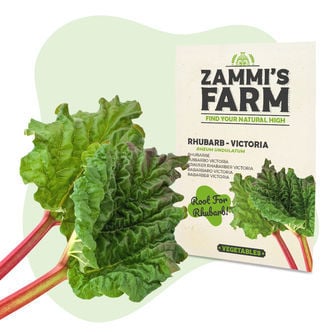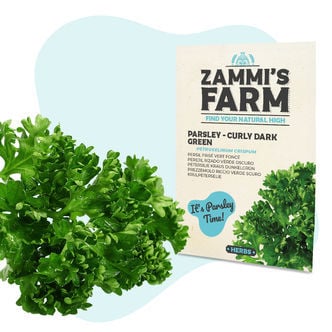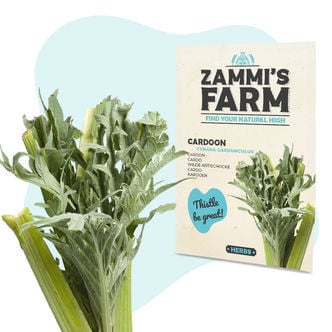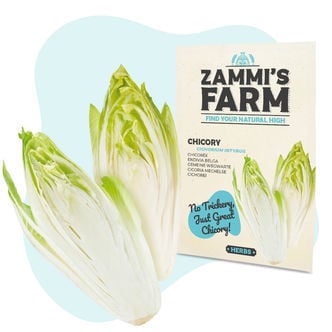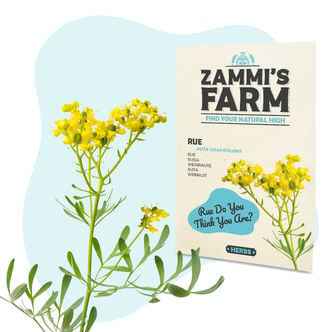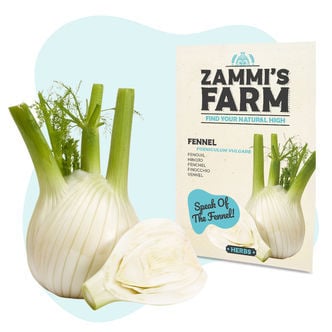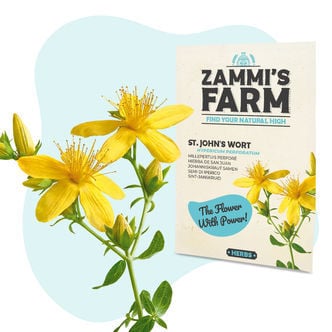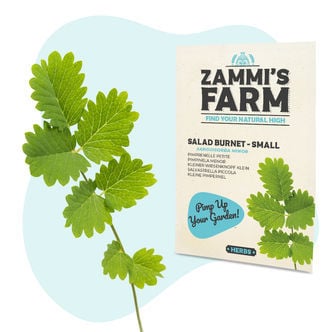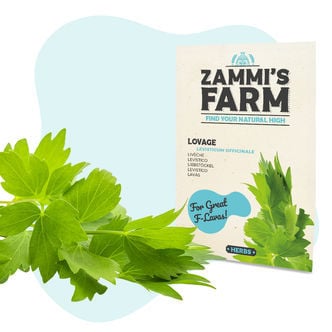Plant Seeds
Discover our diverse range of plant seeds, categorized for your gardening convenience. From chili and pepper seeds to exotic varieties, our selection ensures you find the perfect match for your green thumb. Explore subcategories like edible and vegetable seeds for your culinary adventures, or wellness and companion plants to enrich your garden’s ecosystem. Delve into the intriguing world of psychoactive seeds or start an indoor garden with our interior plant seeds. Every seed promises quality and the potential for vibrant growth.
Subcategories
Poppy (Papaver somniferum) Seeds
Poppy (Papaver somniferum) is the plant from which opium, morphine, and heroin are made. The poppy seeds themselves don’t contain any alkaloids. With Zamnesia Poppy Seeds, you can grow your own poppy plants at home with ease!
California Poppy (Eschscholzia californica) 100 seeds
California poppy makes a stunning addition to many ornamental gardens, earning attention due to its bright and vibrant orange shades.
Velvet bean | Mucuna pruriens
The Velvet bean (Mucuna pruriens) is a tropical plant that has long been used in many cultures around the world.
Green Mormon Tea | Ephedra viridis Seeds
Green Mormon tea (Ephedra viridis), also known as green ephedra or Indian tea, is a shrub that grows in dry areas of the Western United States. 20 seeds
Peyote (Lophophora williamsii)
Peyote, considered a living god, El Mescalito has a long history among the natives of northern Mexico and Southwestern USA – at least 5700 years, say archeologists. Then it was demonized and driven underground by the Spanish conquerors in the 16th century. But thanks to the wonders of modern cultivation, you can have one of these sacred Lophophora williamsii in your own home.
Gardening Gloves (Zamnesia)
Caring for your plants is paramount when it comes to their performance. Whether you've got an extensive cannabis home grow op or you're just taking care of a couple of pepper plants on your windowsill, the fact remains the same. What better way to care for your plants than with a pair of Zamnesia Gardening Gloves? These stylish gloves keep both your hands and plants safe and clean all the time.
San Pedro (Echinopsis pachanoi)
A.k.a. Trichocereus pachanoi. The San Pedro cactus (Echinopsis pachanoi) originates from Peru and Ecuador. This cactus contains the psychoactive compound mescaline and plays a very important part in Latin American shamanic culture. We sell cuttings in different sizes that will effortlessly resume their growth once they are put back in the ground.
Prickly Pack - Mescaline Cacti Seeds
This variety pack of cactus seeds contains everything you need to start cultivating your own mescaline cacti at home! There are numerous species of mescaline-containing cacti, and each one has a slightly different combination of alkaloids, giving each distinct effects. With this pack, you have a range of mescaline cactus seeds to experiment with.
Peyote (Lophophora williamsii) 20 seeds
With our freshly harvested high quality Lophophora williamsii (Peyote) seeds you can now grow your own Peyote cacti at home. As compared to fully grown Peyote cacti plants, cultivating your own Peyote can be more economic because you can grow them at relatively low cost. Plus, being able to watch your Peyote seeds grow to full-grown flowering plants can make for a fascinating hobby all on its own!
Peruvian Torch (Echinopsis peruviana)
Previously known as Trichocereus peruvianus. This cactus thrives at an altitude of 2000-3000 meters in it's natural habitat, the Andes in Peru and Ecuador. The Peruvian Torch grows at a high rate, contains the psychoactive compound mescaline and has green skin with a light blue glow. We sell different sizes - small, medium and large - all of which are perfect for home cultivation.
Cactus Nutrient
This cactus nutrient is the distilled knowledge of decades of expert cactus growing and breeding. Have the happiest cactus in town with this exclusive product. Custom made for Zamnesia.
pH Test Strips (Zamnesia)
This pack of 100 pH test strips makes keeping your plants happy and healthy very easy. Simply test on a regular basis, and adjust the soil or growing medium as necessary. As a result, your final yield will be as big as it can be!
Bolivian Torch (Echinopsis lageniformis)
Formerly known as Trichocereus bridgesii. This cactus is naturally found in the Bolivian mountains. The natives of Bolivia call this cactus Achuma or Wachuma. We have several sizes of cuttings of the Bolivian Torch in stock.
Bolivian Torch 'Monstrose' (Penis Plant)
The "monstrose" version of the Bolivian Torch (Echinopsis lageniformis) is a special cactus, also called the "Penis Plant". "Monstrose" signifies that this is a mutated form of the original cactus, in this instance the Bolivian Torch. A mutant cactus grows into an abnormal shape and therefore can take on a divergent form compared to cacti of the same species.
Echinopsis macrogona (AKA Trichocereus macrogonus)
Echinopsis macrogona (trichocereus macrogonus) is a sacred cactus similar to the Peruvian Torch. This easy-to-grow cactus contains the alkaloid mescaline.
San Pedro (Echinopsis pachanoi) 20 seeds
Echinopsis pachanoi, the original San Pedro cactus is one of the sacred cacti of South America. For centuries, this cactus has played an important role in Shamanic culture. The cactus is a native to Bolivia and contains psychoactive compounds, the most important one Mescaline. With our fresh Echinopsis pachanoi (San Pedro) seeds you can now easily grow your own San Pedro cacti at home!
Echinopsis ''zamnesiana''
A happy accident or a gift from the god of psychedelics? While no one can say for sure, what we can say is Echinopsis ''zamnesiana'' certainly looks the part. You may notice that some will feature lumps, varied shapes, and all kinds of physical differences.
Super Pedro (Echinopsis scopulicola)
Echinopsis scopulicola can grow up to a huge 4 metres and has beautiful flowers that only open at night. Much like the famous peyote, it contains the psychotropic compound mescaline. Easy and rewarding to grow, Echinopsis scopulicola is a great addition to a psychedelic garden.
Trippy Garden Pack - Smart Seeds
This Trippy Garden Pack contains a range of different seeds that will flourish into plants containing legal psychoactive compounds. If a herb garden doesn't quite cut it for you, then these seeds will give you a real project. Experiment with a range of psychoactive plants and see which you like the best.
Peruvian Torch (Echinopsis peruviana) 20 seeds
Echinopsis peruviana, better known as the Peruvian Torch cactus is another of the hallucinogenic cacti that is native to South America. The Peruvian Torch contains the psychoactive alkaloid mescaline which makes for powerful, altered states of consciousness. With our fresh Peruvian Torch (Trichocereus peruvianus) seeds you can now grow this sacred cactus easily at home.
Portable Pepper Bomb (Scovilla) 1.5g
These Portable Pepper Bombs from Scovilla allow you to carry 1.5 grams of your favourite chilli powder with you everywhere you go. If you regularly find yourself disappointed at the mildness of your "spicy" meals, be disappointed no longer! Now, you can spice things up to your heart's content.
Opuntia invicta (Grusonia invicta)
Native to Baja California in Mexico, Opuntia invicta (or Grusonia invicta) is a unique member of the prickly pear cactus genus. It grows thick, long reddish-purple spines; intense, dark green stems, as well as stunning yellow flowers.
Ghost Pepper Edition Hot Sauce (Mad Dog 357)
Made from one of the hottest chillies in the world—the Bhut Jolokia, or Ghost Pepper—rest assured that this sauce by Mad Dog is extremely hot. On the Scoville scale, it comes in around 150,000 SHU. Suitable for adding to dishes or fiery dipping, get your heat fix here!
Hot Sauce (Mad Dog 357)
Featured on Hot Ones, Mad Dog 357's hot sauce is an extremely powerful chilli sauce made in Sudbury, Massachusetts. With a Scoville rating of 357,000, Mad Dog 357 hot sauce packs serious heat and is made only for true chilli-heads. Try a recommended dose of 1 drop and strap yourself in the fire literally takes your breath away, sending shivers across your entire body.
San Pedro Crested (Echinopsis pachanoi cristata)
Another Zamnesia first: The Crested San Pedro (Echinopsis pachanoi cristata)! This unique variation of the San Pedro cactus doesn’t just have one growth-point like the ordinary San Pedro but many. Each of these grow-points can grow at their own pace which makes the Crested San Pedro develop into very cool shapes.
Geotextile Fabric Wall Planter (10L)
These 10L geotextile Wall Planters from Gronest are made from 100% recycled material and are perfect for flowers and plants that love to hang. The fabric has many benefits and it allows for great aeration and run off, leading to healthy roots for your plants. Go vertical and create a garden right on your wall with Gronest's eco-friendly Wall Planters.
Echinopsis macrogona (Trichocereus macrogonus) 20 seeds
Echinopsis macrogona (AKA Trichocereus macrogonus) is a sacred cactus. Like the Peruvian torch cactus, Echinopsis macrogona contains mescaline which gives it powerful psychedelic and hallucinogenic properties. With the Echinopsis macrogona seeds available at Zamnesia you can now grow this sacred cactus at home!
Bolivian Torch (Echinopsis lageniformis) 20 seeds
The Bolivian Torch (Echinopsis lageniformis) is one of the psychedelic cacti of South America that plays an important role in Shamanic rituals. It is similar in appearance to the San Pedro cactus but with fewer and wider ribs. Like the San Pedro cactus, the Bolivian Torch contains a number of psychoactive alkaloids including the powerful psychedelic compound Mescaline.
Finest Truff Stuff (Scovilla)
Available in a 100ml bottle, Truff Stuff from Scovilla combines Carolina Reaper-infused hot sauce with truffles. The result is a moreish, flavourful and most of all, fiery sauce that's ideal for adding to plenty of different dishes. Completely free of additives, Truff Stuff is gluten and lactose-free as well as suitable for vegans. So add some fungi-tinged heat to your meals today.
Weed Curing Jar
You probably won’t find better weed curing jars than these quality mason jars “Made in Germany”. The jars are made from extra thick glass and feature a rubber ring and galvanized wire bracket for a 100% airtight seal. Available in 4 sizes: Small (255ml), Medium (400ml), Large (800ml) and Xtra Large (1140ml).
Boveda Humidipak
Say goodbye to fluctuating humidity inside your storage containers and the CVault containers in particular. The Boveda Humidipak keeps the relative humidity of the air at 62% or 58% by adding or removing moisture. There are no chemicals in the Boveda humidity packs; the contained elements are completely natural and food-safe: Salt and purified water. No maintenance or refilling required.
Ultra Fine Misting Bottle (Zamnesia)
The Zamnesia Ultra Fine Misting Bottle is a premium-quality watering tool designed for the meticulous care of your home growing projects, from plants to magic mushrooms and beyond. Boasting a sleek blue design featuring the distinctive Zamnesia logo, this misting bottle ensures that your upkeep is not only effective but also stylish. It's easy to use and has many applications.
Moisture Fighters
Get the best from your buds with these easy-to-use Moisture Fighters. Simply place a sachet into your curing jar to ensure max flavour, aroma, and potency from your buds. Available in various sizes and RH levels to suit your needs—and with an easy-to-read colour-coded system that tells you when to replace the sachet—you can't go wrong with them.
Ashwagandha (Withania somnifera) Seeds
Ashwagandha (Withania somnifera) is a shrub native to India, and it has been used for many years in the Ayurvedic tradition. Attractive and easy to cultivate, why not try growing it in your very own garden?
Klip Dagga (Leonotis nepetifolia) Seeds
Native to Africa and Southern India, klip dagga is a colourful plant with a unique appearance. Fortunately, it's also pretty simple to grow. Sow the seeds indoors at the end of April in moist soil, and keep the same conditions until they germinate. Then, move them outside so they can flourish. Provide them with plenty of light and warmth, and harvest leaves and flowers when ready.
Wild Lettuce (Lactuca virosa) Seeds
Wild lettuce (Lactuca virosa) thrives in cool and cold conditions and produces edible leaves throughout most of the year, even into winter. Plus, it's full of nutrients. Get growing!
Plastic Pasteur Pipette (3ml)
These simple plastic pipettes always come in handy around the home. Whether you need to measure fertilisers for the garden, carefully dose tinctures, or take a home drug test, we always recommend having at least a few plastic pipettes on hand. Remember to dispose of the pipettes after each use for the best results and to avoid contaminating whatever liquids you're measuring.
Cherry Tomato 'Supersweet 100 F1' (Solanum lycopersicum) Seeds
The Supersweet 100 cherry tomato hybrid is one of those plant hybrids that says it all in its name: these plants produce extremely sweet fruit and, in the right conditions, can grow into long vines capable of producing 100 or more tomatoes at once. Note that this is a tall tomato variety that needs full sun, support from stakes/trellises, plenty of care, and a lot of natural fertilizer to thrive.
Basil 'Dark Opal' (Ocimum basilicum) Seeds
Like normal basil, Dark Opal basil is best sown indoors. Keep your seedlings on a warm windowsill as they develop their roots and first leaves, then bring them outside in mid/late spring. Like most herbs, basil likes well-draining soil and partial shade/full sun, and is best watered sparingly (in the morning to give the roots time to dry). Use in a variety of cuisines and as a natural insecticide.
Cocktail Tomato 'Thai Pink Egg' (Solanum lycopersicum) Seeds
Thai Pink Egg Tomatoes originate from Thailand where they're treasured for their bright colour and deliciously sweet flesh. While they grow very similarly to other tomato (Solanum lycopersicum) varieties, Thai Pink Egg tomatoes like a little more water than usual, and hold up better in rainy climates as well as heat waves. Remember to prune and fertilize tomatoes regularly for bountiful harvests.
Alpine Strawberry (Fragaria vesca) Seeds
Alpine strawberry (Fragaria vesca) loves full sun or partial shade, though it's best to protect plants from the afternoon sun in hot climates. While Fragaria vesca can tolerate some shade, plants produce more fruit in bright, sunny locations. Grow Fragaria vesca in well-draining, fertile, and moist soil. Alpine strawberries have a strong flavour and can be enjoyed fresh or made into conserves.
Flower Seed Pack - Zammi's Farm
This Flower Seed Pack contains a variety of seeds from Zammi's Farm that will make your garden absolutely beautiful. Distribute in a garden bed or on your lawn, and then just sit back and wait for this veritable meadow to flourish. Whether you want excessive beauty or food for pollinators, it's all in here.
Paprika Purple Bell (Capsicum annuum) Seeds
Add some vibrant violet colours to your garden! Paprika Purple Bell is the way to go. Get these seeds sown and started under glass between March and May, and you'll be greeted with a bevvy of purple peppers come summertime. Just house them in moist soil with a consistent temperature of around 20-25°C; you can't go wrong. With sweet flavours, they make the perfect addition to all kinds of dishes.
Indigo Rose Tomatoes (Solanum lycopersicum) Seeds
Indigo Rose is a heirloom tomato variety (Solanum lycopersicum) that produces stunning purple/black fruit. Like other tomato varieties, Indigo Rose is best grown in full sun and highly fertile soil, regularly pruned/pinched, and supported with stakes/towers/trellises. Harvest when the shade-facing side of the tomatoes are a soft pinkish-red colour and the sun-facing side a deep purple/black.
Grandian Strawberry F1 (Fragaria x ananassa) Seeds
Few things are as rewarding as picking your own strawberries. These Granadian F1 strawberries produce large, plump, and deliciously sweet fruits. Start them off early in a protected seedbed when temperatures reach 20°C and transplant them into large pots or an open field in early summer. Pick your berries when they're plump and red, and resow your seeds every year.
Asparagus Fern (Asparagus plumosus Nanus) Seeds
Looking for a beautiful houseplant but don't have a green thumb? The Asparagus Fern (Asparagus plumosus nanus) is a great choice. These plants can be grown indoors all year long at temperatures around 20°C. Ideal for small-to-medium pots and bright rooms without direct sunlight. With long, pinnate leaves, lace ferns are a treat for the eyes yet super easy to care for.
Barley - Cat Grass (Hordeum vulgare) Seeds
Barley - Cat Grass (Hordeum vulgare) Seeds are, as the name suggests, purrfect for your cat. It works as a digestive aid for them and may also prevent hairballs! The plant is effortless to grow and care for and can be sown between the months of April and September. Pick a light spot for them to flourish in, but ensure it doesn't get too much direct sunlight. This is one fast plant to grow!
Small Ornamental Gourds Seed Mixture
Ornamental gourds are beautiful decorations, ideal for flower arrangements, centrepieces, and more. With this seed mix, you can grow a wide variety of ornamental gourds at home with ease. Simply sow seeds in spring directly in the ground. If need be, you can transplant plants after 5-6 weeks. Remember to slowly dry the harvested fruits for long-lasting, beautiful gourds.
Philodendron (Philodendron selloum) Seeds
Philodendron trees are native to the tropical regions of Brazil, Argentina, Bolivia, and Paraguay. But with these hardy seeds, you can grow Philodendron houseplants at home with ease. Start your seeds off in Spring, and separate seedlings into pots once they've grown a little. Keep mature plants in bright areas away from direct sunlight, and especially away from pets - Pholdendrom is poisonous!
Cigar Plant (Cuphea ignea) Seeds
Known as the Mexican Cigar Plant or Firecracker Plant, Cuphea ignea gets its name from its bold, orange, tubular flowers. It makes for a beautiful houseplant indoors, requiring direct sunlight, warm temperatures, and well-draining soil. When growing from seed, separate seedlings when they're roughly 8-10cm tall and plant them in small-to-medium pots.
Dwarf Pepper 'Mixed' (Capsicum annuum) Seeds
Add some colour to your home! These peppers aren't really suitable to eat due to their acquired taste that isn't super flavourful. But what they lack in flavour, they more than makeup for their outstanding appearance. Simply pot these seeds indoors in February and let them flourish throughout the year as they showcase massively appealing red and yellow colours, brightening any space.
Carrot - Interceptor F1 (Daucus carota) Seeds
These slimline carrots make for a healthy snack and have a sweet, satisfying taste. What's more, is that these seeds are effortless to cultivate and are unlikely to give even the most novice of growers a hard time. Sow these seeds directly into the ground and provide them with a little maintenance and upkeep and they'll deliver a bevvy of bright orange beauties come July-October. Perfect.
Pole Bean Neckarkönigin (Phaseolus vulgaris) Seeds
For an effortless growing project, look no further than Pole Bean Neckarkönigin (Phaseolus vulgaris). Sow these seeds directly into the ground in mid-May and let them do their thing. All it takes is a little maintenance, sunlight and moist soil, and this plant will perform. Able to produce plenty of veggies with very minimal effort makes Pole Bean an excellent choice for all growers.
Kalimero F1 Snack Cucumber (Cucumis sativus) Seeds
Whether pickled, as part of a salad or just a healthy treat, our Kalimero F1 Snack Cucumber is an incredibly simple veg to cultivate, not to mention extremely fast too! Get them going indoors around March and bring them outside for them to flourish over Summer. They're so quick to grow that you can actually get a few harvests from the same plant at the end of Summer. Versatile and accessible!
Cucumber Bella F1 (Cucumis sativus) Seeds
Bella F1 cucumber seeds (Cucumis sativus) produce long, sweet, and crisp fruit and are resistant to mildew. Start seeds outdoors in early-mid Spring and remember to water your plants generously while taking care not to wet their leaves (which attracts moulds and other pathogens). Use trellises to support the long vines and save space, and enjoy continuous harvest all throughout summer.
Sweet Pointed Pepper Palladio F1 (Capsicum annuum) Seeds
Get these bright yellow beauties going from mid-March, and give them plenty of light, sun and moist soil, and they'll flawlessly perform. These sweet and mild peppers will be ready come late Summer. They require very little in the way of maintenance and are extremely versatile. Whether you add them to salad, tacos or any other savoury dish, these yellow peppers are sure to brighten your plate.
Sweet Pointed Pepper Kapiya (Capsicum annuum) Seeds
Looking for something genuinely vibrant both in colour and flavour? Allow us to introduce the Sweet Pointed Pepper Kapiya. It's believed this pepper is originally from Bulgaria but has been used widely throughout Europe and the rest of the world. Sow these seeds in early Spring and repot as soon as the first leaves appear. Move the plants outside and let them flourish until October.
Onion de Paris (Allium cepa) Seeds
How do you get your hands on some great-tasting onions? Easy, simply sow these seeds in early Spring under glass and then move them outside in late April. This will give them plenty of time over the summer to mature and be ready for the picking! These onions are perfect for pickling or including as tiny veg on your plate or as part of a summer salad. The options are plentiful, and so is the yield!
Microgreens Fennel (Foeniculum vulgare) Seeds
Peppery, mild and sweet, Microgreens Fennel takes just 7-14 days to germinate and just another 2 weeks on top until the earliest greens are ready to harvest and use in a multitude of dishes. Just provide them with plenty of light and warmth and keep the surrounding soil moist, and you simply can't go wrong! This is one fast-to-grow plant that delivers in all areas. Get some in your home today!
Microgreens Salad Mix (Lactuca sativa) Seeds
With a selection of great greens available here, the vibrant Microgreens Salad Mix is ideal for adding to salads and can actually be grown all year round. Quick to flourish, sow the seeds when it works for you; just be sure to keep the soil moist but not waterlogged, and this plant will deliver delicious, moreish leaves and work perfectly in plenty of dishes. Ideal for all growers!
Microgreens Exotic Salad Mix - Seeds
Take your salad game to the new level with Exotic Salad Mix. It's really easy, just scatter the seeds on top of the soil and press gently. Cover with a thin layer of soil and spray with water. Use the mister once or twice a day to keep soil most. Harvest after 2–3 weeks, when you see the first set of true leaves. Microgreens thrive in sunny environments, think windowsills or balconies.
Microgreens Kale (Brassica oleracea) Seeds
Kale (Brassica oleracea) is in the spotlight for being one of the most nutritious greens on the market. But did you know that kale sprouts are even more packed with nutrients than fully mature kale plants? Sow kale seeds in a propagator at high density, and harvest your sprouts after 7–10 days for a fresh, delicious, and highly nutritious microgreen.
Microgreens Radish - Daikon Green (Raphanus sativus) Seeds
Green Daikon Radish is delicious and highly nutritious, used typically as a garnish in Japanese cuisine. Daikon Green Microgreens, however, are just as packed with flavor yet with much higher nutrient density. To grow them, simply sow seeds at a high density in a propagator and harvest the sprouts after roughly 1 week. With a fresh, tangy flavour, they go great in fresh and cooked Asian dishes.
Wildflowers Seed Mixture
Upgrade your garden with this fine selection of wildflower seeds. This mixture of both annual and perennial flowers means that your garden is completely cared for, for the entirety of the year and well beyond. All varieties have been carefully chosen to provide the finest colours and aromas that are eye-catching not only to humans but also butterflies, bees and a host of other insects.
Rocket Sprouts (Eruca sativa) Seeds
The peppery leaves of Rocket Sprouts make for the ideal addition to a wide variety of dishes; what's more, is that the path to this tasty produce is an extremely easy one, regardless of your prior expertise! Rocket Sprouts can be grown in indoor, outside, and greenhouse settings and require very little in the way of maintenance. Sow seeds in early Spring and enjoy great flavours come Summer.
Nasturtium 'Single Flowered' (Tropaeolum majus) Seeds
Boasting deep red, orange, and yellow hues, nasturtium flowers are surrounded by rich green leaves, making for a visually appealing plant. Able to reach heights of around 3m, this climbing plant is ideal for walled gardens and spacious areas. Not only boasting great looks, the flowers are also edible, making a vibrant addition to various dishes.
Cornflower 'Blue Ball' (Centaurea cyanus) Seeds
The Blue Ball cornflower is a great-looking flower that's ideal for a whole host of gardening set-ups. Sow the seeds directly into the ground in a place of your choosing in late spring, and they'll mostly take care of themselves throughout the summer. Without much needed in the way of maintenance, these flowers undoubtedly appeal to all levels of expertise. Colourful and vibrant, perfect for all.
Corn Poppy 'Single Red' (Papaver rhoeas) Seeds
Add some colour to your garden with these bright red poppies. Sow seeds in late spring and watch them flourish. Come June–September, you'll be met with beautiful deep red hues. Low-maintenance and accessible to all levels, just give them plenty of light, warmth, and water.
Alyssum (Lobularia maritima) Seeds
Otherwise known as Sweet Alison, alyssum is an all-white flower that's suitable for all gardens. Whether positioned in flower beds, rockeries or pots, allow alyssum to provide some subtle beauty to your garden. Sow them in early April under glass and then fully transplant them roughly 5–6 weeks later. Once outdoors, they'll flourish in the sunlight and warmth for the summer. Loved by bees.
Cress Sprouts (Lepidium sativum) Seeds
Cress Sprouts make for an easygoing and hugely rewarding growing project. Whether situated on a windowsill or as part of your garden, it'll perform with very little maintenance required. This is a fast-growing plant that can be sown and grown all year round. Just be sure to provide temperatures of around 20-22°C and a little upkeep, and you can enjoy tasty cress rich in vitamins A, B and C.
Summer Flowers Seed Mixture
The Summer Flowers Mixture features a wide variety of flower seeds that will brighten up any garden you place them in. Sow them in early April, and by the time summer rolls around, your garden will be hugely colourful, vibrant and aromatic. Once fully grown, you can marvel at your handiwork and enjoy the fruits of your labour. With little upkeep required, they are ideal for all—including bees!
Forget-me-not 'Indigo Blue' (Myosotis alpestris) Seeds
A truly unforgettable flower, the forget-me-not, otherwise known as Myosotis alpestris, is a plant that's native to Europe and is a vibrant blue flower that's suitable for any garden. Sow them in open ground in July and let them flourish in a shady spot. Keep the ground moist throughout the growing cycle, and you'll be rewarded with a bevvy of beautiful flowers to brighten up your garden or home.
Alfalfa Sprouts (Medicago sativa) Seeds
It takes about 5 days to grow alfalfa sprouts. Use a sprouting jar, soak the seeds in cool water for 8–10 hours, drain well. Spread seeds out in the jar and leave for 10 hours at room temperature, away from direct light. Repeat the rinse/dry process until sprouts reach preferred size. Alternatively, place sprouts between damp paper towels after soaking. Add to salads, sandwiches, or stir-fries.
Bitter Gourd (Momordica charantia) Seeds
The bitter gourd, otherwise known as bitter melon or balsam pear, is a fruit that originally comes from Africa and Asia. However, now you can grow it right at home! Start it off in a greenhouse or indoors for 4 weeks, then move it outdoors to flourish in the summer months. Typically, it'll be ready to harvest come October. Pair it with fish or meat, and you simply can't go wrong.
Amsoi Red (Brassica juncea var.rugosa) Seeds
Amsoi, also known as Indian Mustard, has a spicy flavour making it ideal for use in salads and Asian cuisine. Able to be cultivated in both indoor and outside environments, amsoi is highly resilient and can withstand frost and colder climes effortlessly, making it a great choice for all levels of growers. Quick to grow and can be harvested many times.
Mallow (Malva sylvestris) Seeds
The mallow, or Malva sylvestris as it's otherwise known, is a plant that's commonly found in the warmer climes of Iran and North Africa. However, now you can grow this colourful companion at home. Sow these seeds in April, and you'll see that come September, you'll have some fully formed flowers at your disposal. Mallow is a particular favourite for use in soups.
Atlantic Giant Pumpkin (Cucurbita maxima) Seeds
Try your hand at growing Atlantic Giant Pumpkin which can weigh 100kg and more. This vegetable thrives in warm and sunny spots, and you can sow your seeds indoors in mid-spring or early summer outdoors. Ensure your plants have fertile soil and are sheltered from cold winds and you will be able to sit back and watch this vigorous grower. Harvest in September/October, right for Halloween!
Valerian (Valeriana officinalis) Seeds
Valerian is a hardy plant that thrives in full sun and half-shade in almost all soils. Plant in an outdoor seedbed around April-May, prick out once in June, before transplanting them in autumn to their final position in your garden. The extracted juices of valerian root can be used for making home concoctions, while its leaves make for great additions to salads.
Purple Perilla (Perilla frutescens) Seeds
Perilla, shiso, or deulkkae (Perilla frutescens) is an annual plant native to Southeast Asia and India, and is often used as a garnish for fish, rice, and tempura dishes. Perilla likes sunny or part-shade locations and deep, wide, well-draining plots of soil to accommodate its low, outward growth. Harvest mature perilla leaves and use them as an aromatic in your favorite dishes or infusions.
Cherry Tomato - Cerise (Lycopersicon esculentum) Seeds
Who doesn't love nice, fresh cherry tomatoes to enjoy? No matter the weather, you can have a bevy of bright-red beauties in next to no time. Sow seeds in early spring indoors or outside (if living in a warm climate), and they'll be ready come late summer. Give them moist soil and plenty of light and warmth, and you'll be rewarded with a great yield. Perfect for salads and all kinds of cooking.
Gherkin 'National' (Cucumis sativus) Seeds
Grow these gherkins in your garden and you'll have a fine selection of small fruits to pick from. Get them going in early April indoors or in a greenhouse, and then take them outside to plant in May. Provide them with shelter and sun, and you'll have a harvest of gherkins-goodness in no time. Perfect for pickling, they will add some flair and flavour to your food.
Asparagus 'Argenteuil' (Aspergus officinalis) Seeds
Asparagus plants might take time to get to harvest, but they are well worth the wait. Plant asparagus seeds in rows directly in nursery seed beds 4 weeks before the Ice Saints in sandy soil. Seeds can take 3 weeks to germinate, and young plants should be kept in nurseries for 1 year before moving them to their final spot. Transplant mature plant crowns into trenches, adding soil regularly.
Summer Squash 'Black Beauty' (Cucurbita pepo) Seeds
Whether you know it as courgette or summer squash, this adaptable vegetable lends itself well to all kinds of cuisines. Able to produce a huge harvest, make the most of your plants by starting them under glass, and then move them outside to flourish in the summer months. Give them the perfect balance of sunlight, warmth, and shade, and you'll be rewarded with plenty of delicious veggies.
Soybean 'Edamame Green Shell' (Glycine max) Seeds
Perfect in Asian cuisines and as a healthy snack, edamame has plenty of uses. You'll be pleased to know that it's also pretty easy to cultivate from home too! Get plants started indoors or in a greenhouse in early May, and then once the seedlings are big enough, move them outdoors to soak up the sunlight and warmth. Come October, you'll have a bevy of soybeans ready to go.
New Zealand Spinach (Tetragonia tetragonoides) Seeds
New Zealand spinach can be harvested over a long period, which makes it ideal for continual use in cooking once ready. Be sure to soak the seeds in a bowl of water overnight before sowing to make sure they germinate. Able to be sown inside in early April or plant outdoors in May-August. Provide warmth and sun and come November time, you'll be ready to enjoy all New Zealand spinach has to offer.
Red Swiss Chard (Beta vulgaris) Seeds
A robust year-round plant, Red Swiss Chard, otherwise known as Beta vulgaris, is a plant that can sprout rhubarb-like stems with leaves that can all be utilised in plenty of different culinary dishes. With a sowing period of March until July, enjoy the fruits of your labour come September/October time. With bright red colouring, this will brighten up both your garden and dinner plate.
Dandelion (Taraxacum officinale) Seeds
Taraxacum officinale, aka the dandelion, is a herbaceous perennial plant that's perfect for all kinds of growing setups. Allow the beautiful yellow colour to brighten up your life. Sow in spring, and allow plants to flourish over the summer months. Provide well-draining soil and plenty of light and warmth, and you'll be rewarded with a plant boasting numerous culinary and herbal uses.
Victoria Rhubarb (Rheum undulatum) Seeds
Victoria rhubarb (Rheum undulatum) likes sunny locations and needs exceptionally well-draining soil (waterlogging or overwatering can greatly impact the growth of rhubarb plants or cause them to rot). Rhubarb also doesn't like extremely hot conditions, which can stunt it or stop plant growth altogether. Fertilise in spring and summer for improved growth. Harvest a few stalks at a time in autumn.
Parsley 'Curly Dark Green' (Petroselinum crispum) Seeds
Unlike most herbs, Petroselinum crispum (parsley) likes fertile soil. Parsley plants can be started indoors in a propagator or on a warm, sunny windowsill. Alternatively, sow directly outdoors after the last frost. Parsley plants like full sun, regular watering, and occasional, balanced fertilisation. Harvest fresh leaves and stems to promote bushier growth, and use in the kitchen as you please.
Cardoon (Cynara cardunculus) Seeds
Cynara cardunculus (cardy, cardoon, or artichoke thistle) is a very hardy and somewhat invasive plant. It grows best in soil rich in organic matter (including dung and decomposing plant matter) and in locations with warm conditions and full sunlight. The spiked flowers can be eaten like artichokes, while the stalks are best protected from the sun (using dirt mounds) and served boiled or braised.
Chicory (Cichorium intybus) Seeds
Sow chicory seeds in spring, after the last frost, in a spot with at least 6hrs of direct sunlight. Take care not to bury the seeds deeper than 0.5cm beneath the soil. Seedlings will sprout after 2–3 weeks in moist (but not wet) soil and should be thinned to leave roughly 30cm between plants. Harvest fresh leaves and blanched buds to eat raw. Dried, ground chicory roots can substitute coffee.
Rue (Ruta graveolens) Seeds
Ruta graveolens, or simply rue, is very hardy and can tolerate poor soil fertility and droughts. Plant established rue specimens in full sun and water sparingly, especially in dense soils. Use mulch to insulate rue plants during winter, and cut back plants entirely to their old wood in spring to encourage new growth. While previously used in various cuisines, rue is best grown as an ornamental.
Fennel 'Fino' (Foeniculum vulgare) Seeds
With its unique flavour and aroma, fennel has been a prized vegetable since the days of ancient Greece. Sow in the early spring months, and let the plant flourish until late September before harvesting. Plenty of room is required, as fennel can reach heights of around 2m. Once ready to harvest, fennel root and fronds can be put to versatile use in the kitchen.
St. John's Wort (Hypericum perforatum) Seeds
Hypericum perforatum, or St. John's wort, is an easy-to-grow perennial with beautiful star-shaped flowers. It grows best in full sun or partial shade, and can tolerate loamy or sandy soils, drought, and even flooding. Plant outdoors from early to mid-summer, and propagate St. John's wort from seed, division, or by taking soft-wood cuttings. Harvested flowers have a long history of holistic use.
Salad Burnet (Sanguisorba minor) Seeds
Salad burnet thrives in well-draining soil and is a hardy and robust plant whose leaves will be ready to harvest in late summer. Provide ample light, warmth, and water, and it'll reach heights of around 60cm. A plant favoured by such figures as Francis Bacon and Thomas Jefferson, it has a flavour that's perfect for sauces, dressings, and even summer drinks.
Lovage (Levisticum officinale) Seeds
Lovage seeds are best germinated indoors during spring, then brought outside once they have developed 2 sets of leaves and the last frost has passed. Transplant seedlings into fertile, deep, well-draining soil in full sun. Where possible, keep the soil slightly acidic (roughly 6.5 pH) and partly sandy/loamy with plenty of organic matter. Cook lovage leaves/roots or eat them raw in salads.













 United States
United States

















